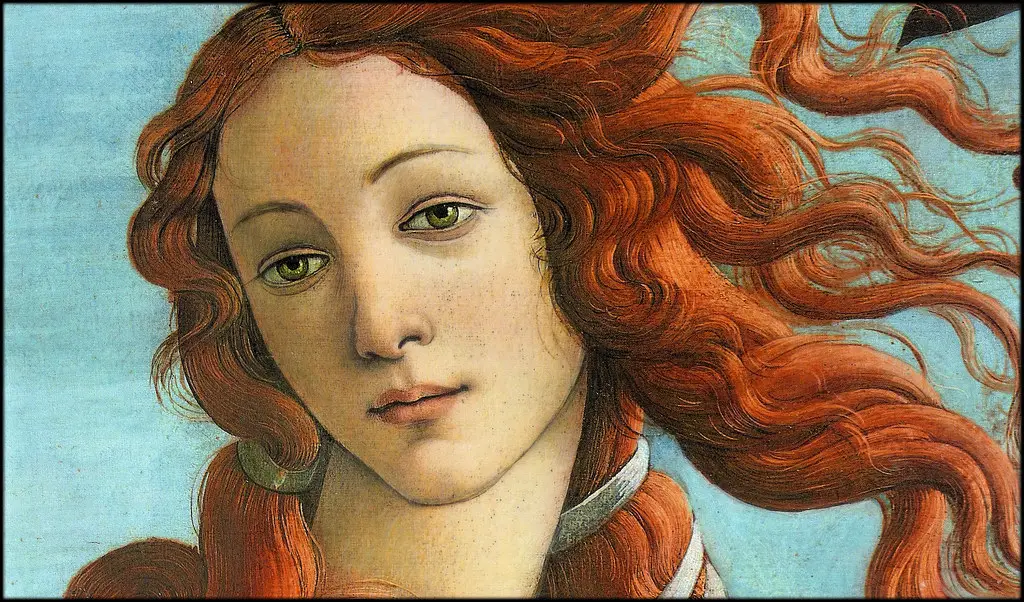
In the captivating realm of ancient mythology, the goddess Venus emerges as a resplendent symbol embodying the essence of beauty, love, and all that is enchanting.
Revered across diverse cultures and known by different names, she assumes the persona of Aphrodite in Greek mythology and Venus in Roman mythology.
Her magnetic presence has been the source of fascination for humanity’s collective imagination, spanning countless centuries.
Join us on a captivating journey as we unveil the mystique enveloping this celestial figure and delve into over ten intriguing insights about the goddess Venus.
10+ Venus Goddess Facts
Fact #1: The goddess of love and beauty
Venus, revered as Aphrodite in Greek mythology, is a celestial being intrinsically linked to a captivating array of qualities.
Her essence revolves around the enchanting domains of love, beauty, desire, and fertility.
She serves as the living embodiment of these virtues, often portrayed as the very epitome of feminine allure – a luminous presence that has, for countless generations, enthralled both hearts and minds.
- Read also: Mercury in Roman Mythology
- Read also: Who is Theia? Unraveling the Enigmatic Powers and Enduring Legacy
Fact #2: Birth from Seafoam
The captivating mythological origins of Venus mirror her enchanting attributes. In the domain of Greek mythology, the goddess Aphrodite, inseparable from Venus, made a really striking entry into the world.
The story spreads out with the imposing Titan Cronus, who, in a sensational touch of destiny, cut off the privates of Uranus, the early-stage sky god, and cast them into the profundities of the ocean.
It is amidst the frothy seafoam, near the idyllic shores of the island of Cyprus, that Aphrodite emerged, fully grown and breathtakingly beautiful.
This mythic tale of her birth from the seafoam is not merely a captivating origin story but also a profound symbol of the goddess’s ethereal beauty and her innate connection to the boundless sea.
Fact #3: Marriage to Hephaestus
While Aphrodite, or Venus in Roman mythology, was indeed bound in holy matrimony to the god of blacksmiths, Hephaestus, the intricate web of love in Greek mythology was far from conventional.
Her heart, it was widely believed, beat with an irresistible passion for Ares, the fearsome god of war.
This clandestine love affair became the stuff of mythological drama, shrouded in secrecy and punctuated with clandestine rendezvous.
The divine love triangle between Aphrodite, Hephaestus, and Ares symbolized not only the tumultuous nature of love but also the interplay of desire and duty among the gods.
Fact #4: Sacred symbols
Venus’s association with love, beauty, and desire is deeply entrenched in a rich tapestry of sacred symbols.
Among these symbols, the rose stands out as an emblem of love’s intricate bloom, representing the tender and passionate aspects of affection.
The mirror, conversely, serves as a metaphor for vanity and introspection, reflecting the goddess’s deep connection to self-love and self-reflection.
Doves and swans, renowned for their grace and elegance, are also closely tied to Venus, symbolizing the harmonious and transcendent qualities of love and beauty that she embodies.
Fact #5: The Judgment of Paris
A tale etched indelibly in the annals of Greek mythology, the Judgment of Paris is a narrative that is unfurled against the backdrop of divine beauty.
Paris, a mere mortal, found himself at the center of an extraordinary decision.
Tasked with determining the most beautiful among the goddesses Venus, Hera, and Athena, he faced a choice laden with consequences.
Ultimately, he bestowed the coveted title upon Venus, an act that ignited the flames of envy and rivalry among the goddesses.
This fateful judgment, while seemingly innocuous, was the catalyst for the epic Trojan War, an event that would forever alter the course of history.
Fact #6 Dual origins
The captivating figure of Venus boasts a dual heritage, stemming from both Roman and Greek mythological traditions.
In essence, the Roman Venus owes a profound debt to her Greek counterpart, Aphrodite.
These two divine beings share not only striking similarities in attributes but also parallel roles in their respective pantheons.
The Roman Venus absorbed and embraced the essence of Aphrodite, creating a rich tapestry of cultural interplay that highlights the enduring fascination with love, beauty, and desire in human consciousness.
Fact #7: Mother of Cupid
Within the realm of Roman mythology, Venus gracefully assumes a notable role as the mother of Cupid, the charming yet mischievous deity of love.
Cupid wields his mystical arrows with the power to kindle love and desire among mortals, often sparking a whirlwind of emotions and romantic theatrics.
His actions bear a resemblance to the gentle flutter of a butterfly’s wings, yet they possess the potential to unleash tempestuous storms of passion and romance.
The enduring connection between Venus and Cupid stands as a profound testament to the interwoven tapestry of love and desire, two timeless facets of the human experience that have continually seized the human imagination for countless ages.
Fact #8: Influence on Renaissance art
The Renaissance era ushered in a revival of classical antiquity’s allure, leading to a rekindled interest in mythological figures like Venus.
During this transformative period in art history, painters such as Sandro Botticelli crafted iconic masterpieces like “The Birth of Venus.”
These works celebrated the divine beauty of Venus, reimagining her emergence from the seafoam as a symbol of rebirth and renewal.
The Renaissance’s fascination with Venus reflects the enduring power of her story and her ability to captivate hearts and minds across the ages.
Fact #9 Venus of Willendorf
The enigmatic Venus of Willendorf, a petite yet striking prehistoric figurine, has captivated the imagination of humanity for millennia.
Dating back to a distant era around 28,000-25,000 BCE, this ancient artifact stands as one of the earliest known representations of the female form.
Crafted with intricate detail, its exaggerated curves and voluptuous physique have led scholars and enthusiasts alike to ponder its symbolic significance.
While interpretations vary, many associate this remarkable figurine with themes of fertility and abundance.
Its presence in the annals of human history serves as a testament to our enduring fascination with the divine mysteries of femininity and the cycles of life.
Fact #10: Planetary namesake
Casting our gaze to the celestial realm, we encounter another facet of Venus’s enduring legacy.
The second planet from the sun bears her name, a celestial homage to the goddess herself.
Venus, the planet, possesses a radiant beauty and unparalleled brightness in the night sky, characteristics that have long captivated stargazers throughout history.
This luminous splendor led to the planet’s association with the goddess Venus, reinforcing her status as a symbol of beauty and allure not only on Earth but also in the celestial heavens.
Fact #11: Numerous Epithets
The multifaceted nature of Venus’s mythology is mirrored in the multitude of epithets attributed to her.
Each of these epithets illuminates different facets of her influence and significance.
Venus Victrix, for instance, underscores her victorious nature, while Venus Erycina connects her to the sacred heights of Mount Eryx.
Venus Genetrix celebrates her role as a motherly figure, emphasizing her connection to the creation and preservation of life.
These varied epithets offer glimpses into the diverse tapestry of her mythology and the profound impact she had on the ancient world, where she was venerated under different aspects.
- Read also: Who is Oshun Goddess
- Read also: Exploring the Timeless Power of Greek Fertility Goddesses
Conclusion
The goddess Venus, whether referred to as Aphrodite or Venus, holds a timeless status as an enduring symbol of love and beauty.
Her character, rich and multifaceted, knows no bounds of culture or mythology, resonating across the world.
Her ageless allure has consistently inspired the creative souls of artists, writers, and lovers throughout history.
As we delve into the intricate narratives and symbols entwined in her story, we come to recognize the deep and lasting impact of the goddess of love on the human psyche and our collective reverence for the divine.



